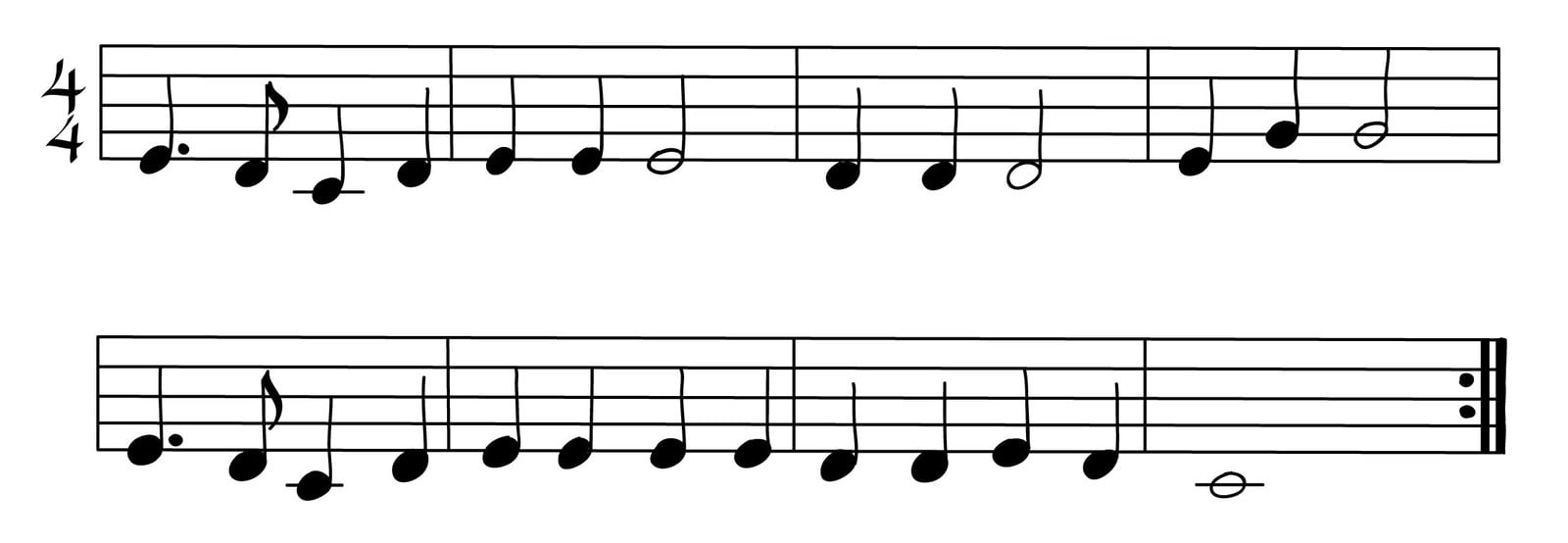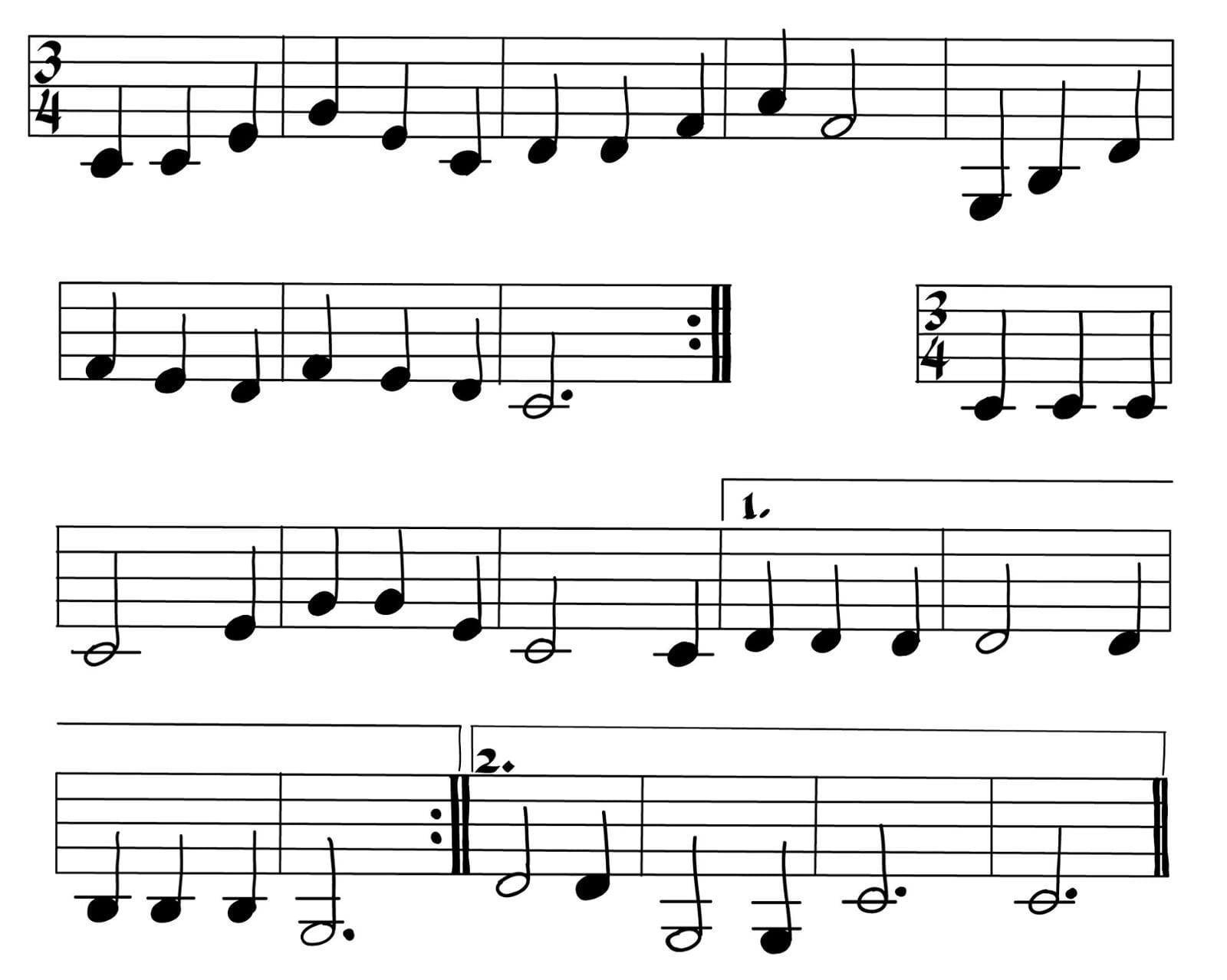READING MUSIC 2
By Mary Jane Gormley
Note: this is the second in a series of four educational articles on the basics of reading music, intervals and notation. These building blocks were originally presented by Mary Jane Gormley as a workshop for harmonica players, but they are a valuable guide for anyone wanting to learn to read music. The print-ready PDF of this article can be downloaded here.
The first two notes here solve the problem posed at the end of “Reading Music 1”: How to show two notes, one longer and one shorter, that add up to the same length as two standard quarter notes (or one half note). Any note with a dot after it is half again as long, and a flag on the stem of a quarter note makes it only half as long—an eighth note. This arrangement makes two quarter notes into a three-one split.
To count this timing out, one-two-three four won’t work; adding an “and” to each of the four quarter-note counts brings in the eighth notes. One-and two-and three-and four-and would cover all eight possible eighth notes in a measure, and the dotted quarter note plus the following eighth note would go one-and two (the dotted quarter note) -and (the eighth note); there’s the three-one split. Three (-and) for the next regular quarter note and four (-and) for the last one finish out the measure. Count out loud and clap when there’s a note.
Here we see the four-over-four time signature that means four quarter notes per measure, called four-four time. We also see the double line at the end, but this time there are two dots in front of it: That means go back to the beginning and play it all again! (If the repeat occurs in the middle of a great long piece, the starting point for the repeat is a mirror image of this same double bar line with the two dots after it.)
At the end we also meet the whole note, a stemless note head with a hole in it; it has a count of four, all by itself.
Read out the intervals: second-down, second-down . . . . Then start on blow five and play it, looking at the intervals and the timing as you play them. Start over at the repeat. Try to feel the three-one split of the dotted quarter note with the eighth note.
Two pieces are mashed together below, only because that’s how it is on my original flip chart!
First piece: We have a new time signature: three-four time, meaning only three quarter notes per measure. They are still quarter notes (they don’t turn into third notes). It’s one-two-three-one-two three, which has an entirely different feel to it. Count out loud and clap for the notes. A dotted half note takes up a whole measure.
Identify the intervals—this is mostly thirds, with one huge one! Same, third-up, third-up . . . start on blow four; a repeat at the end.
Second piece: This is also in three-four time, and we meet a new form of repeat. Music writing is tedious, and music writers will avoid rewriting anything that they can possibly indicate in any other way. From the beginning, we play along and come to a section above the staff lines with a one under a little roof; keep going, and after a while you come to the end of the roof, with the double line and the two dots that means repeat. Here you go back to the beginning, and at the one-roof start, skip to the two with its own roof; when you get to the end here, you’re done! Can you count the timing and clap the notes?
Work out the intervals; it starts same, same, same, third-up . . . . Name the intervals through the repeats. Start playing on blow four.
♪MJNG
The basics of reading music, intervals and notation, are presented here in a series of four articles written by Mary Jane Gormley. These building blocks were originally presented as a workshop for harmonica players, but are a valuable guide for anyone wanting to learn to read music.
They were later summarized into a series of four short articles intended for print. The articles can be downloaded as PDFs in their original format, or the contents found on the pages of this website.
They were later summarized into a series of four short articles intended for print. The articles can be downloaded as PDFs in their original format, or the contents found on the pages of this website.


